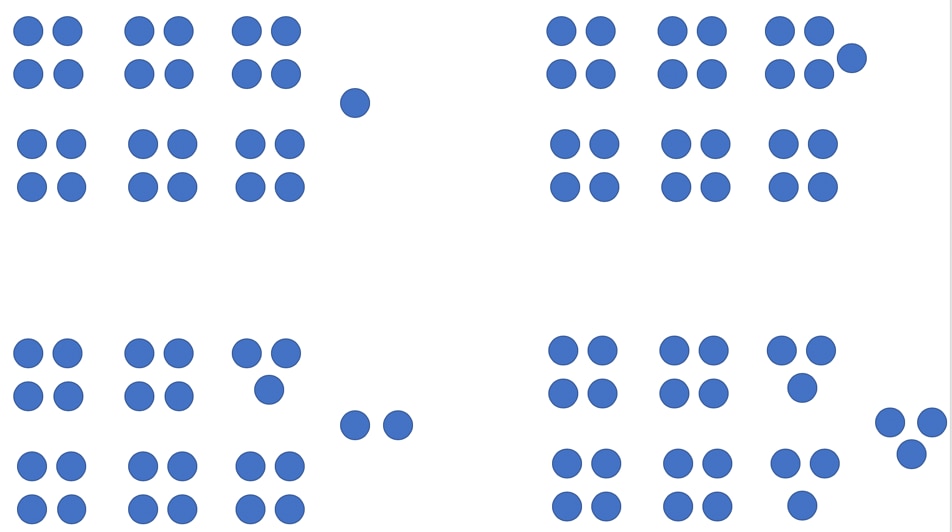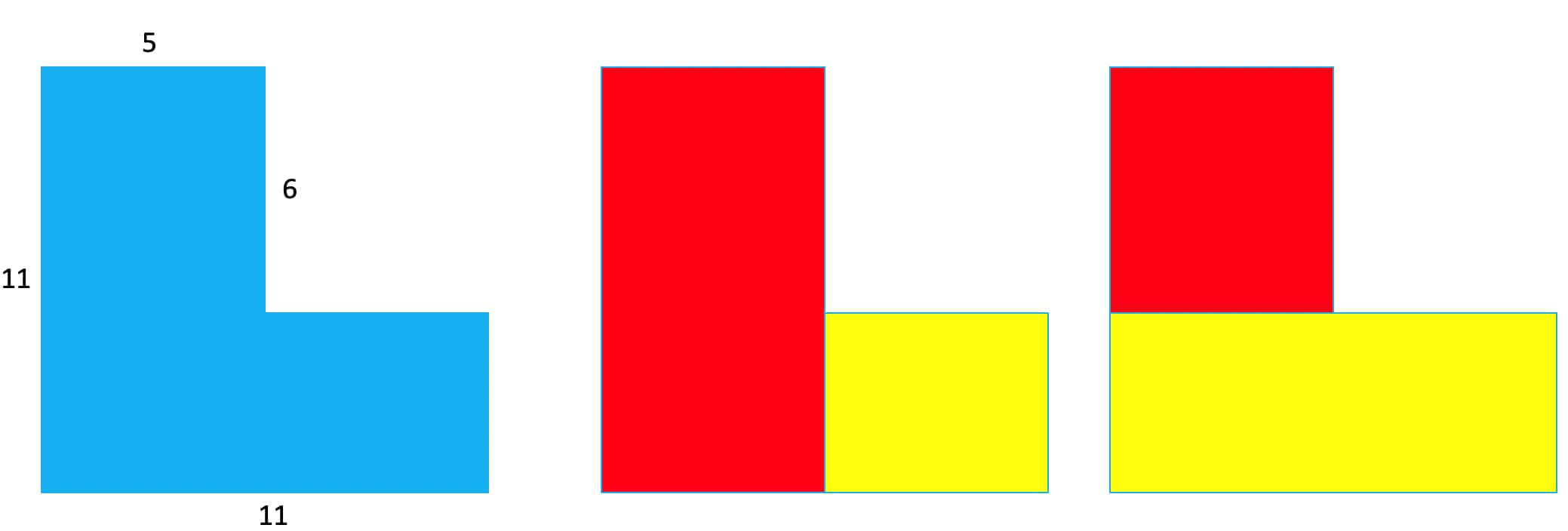Reconsidering Maths as a Creative Discipline

Creativity is at the heart of mathematical practice, with models, images and symbols providing a foundation for solving problems, building empathy and considering others’ points of view. Josh Lury offers some tactics for approaching maths problems while deepening creativity.
‘It sometimes happens that during an arithmetic lesson, when the very atmosphere seems heavy with tedium, a butterfly will flutter into the classroom from out of doors. Then the urchins will all crane their necks and follow its flight with curiosity, as if they saw before them something strange and new and not simply a butterfly.’
So wrote Chekov in his short story Champagne. It is an uncomfortable question to ask: whether the perception of maths lessons has changed all that much in the 130 years since Chekov’s story was written. Many people who are passionate about mathematics and about teaching argue that it is a creative discipline, but I would suggest that Chekov’s description persists in the imaginations of many. There are also fears that an increased focus on arithmetic skills, and a push for ‘mastery’ teaching—taking slower steps through learning, perhaps with children sitting in rows facing the front—might actually be rewinding the clock to those lessons heavy with tedium.
To communicate just what we mean when we say that mathematics is a creative discipline requires more than just showing the pretty pictures of the Mandelbrot fractalor the tessellations and paradoxes of Escher’s etchings. If anything, these only confirm the sense that mathematics is, at its core, incomprehensible to most of us. Even where the message has been communicated in part, there is an entrenched cultural norm: mathematics is something a very few unusually clever people can do, for whom it might indeed be creative though abstruse and abstract, but that most people cannot do, and for whom it is alienating, frightening or just plain dull.
A student who has success in maths and shows an interest in the subject is not usually described as creative. Logical, perhaps. Clever, bright or intelligent maybe, but creative is hardly ever heard. The student who paints portraits or writes poetry with a good grasp of rhythm and metaphor, or strums a guitar soulfully—this student is deemed creative. In this short article I have picked out some of the ways in which doing and learning maths require such facets of creativity as intuition, revelation and the construction of meaning in the world. Rather than showing how these are present in the higher mathematics of academia, I have used examples that will be familiar to any teacher or pupil from primary school.
Story and making meaning
‘A class of 25 children needs to be in groups of 4 for their tennis lesson.’
This is a pretty standard setup for a word problem in a lesson on division with remainders and will likely result in the calculation:
25 ÷ 4 = 6 remainder 1
What does the 6 mean? That there are 6 groups. What about the 25? That there are 25 children in the class. What does that 1 mean? The remainder? It means that there is one child left out, on his own, quite probably feeling awkward and ashamed.
That the numbers and symbols of an equation have meaning can be a surprise for many pupils, who have grown used to the implied sense that arithmetic is a sort of game with some specific rules to follow but with little physical reality outside of the maths tests on a Friday.
In fact, we can use mathematics to describe the world. Now, just as we might use a sentence to describe the world, let us write some mathematics instead:
25 = 6 x 4 + 1
We can say that the 25 is the whole group and the 6 x 4 are our groups happily playing tennis, and our +1 is scuffing his shoes on the outside feeling excluded and tearful. And so, the ‘solution’ becomes the beginning of a journey instead of the end. The teacher is unlikely to leave the +1 on his own, and might ask him to join one of the other groups. Then the mathematics that describes this next step is:
25 = 5 x 4 + 5
Now, though, the +5 is a rather crowded group in which one of the pupils is likely to get a bloody nose from a carelessly swung racket, and so a different solution is needed. This time, a kind pupil has noticed the lonely +1, and so offers to join him, and the description of the world becomes:
25 = 5 x 4 + 3 + 2
Unhappy with this, one from a group of four complains that it’s not fair, as the +2 have a whole court to themselves, so the teacher seeks the ‘fairest’ solution, and sends the complainer of the 4 to join the +2, and now we write:
25 = 4 x 4 + 3 x 3
The different narratives can be described in words based on the problem context, enacted using equipment such as counters, and as calculations. The act of doing mathematics is not then about grinding through a process, but instead becomes a way of triangulating meaning from a context, a representation and a symbolic description.

Elegance and Empathy
As well as considering different end results and their implications, the class can also compare methods, and learn to see things from each other’s point of view. Taking Polya’s dictum that it is sometimes better to solve one problem in five different ways than to solve five problems in one way, taking time to push the boundaries of problem solving and look for alternative methods is an important way to share creativity with the class.
Pupils who are quick with number and procedural fluency may solve a problem first, but the first method may not be the most elegant.
Take the case of finding the area of a compound rectilinear shape. A first reaction for many pupils is to seek to split the shape into two rectangles and calculate the dimensions of each.


However, the pupil who has a more creative, perhaps thoughtful eye, or who is willing to think a little differently sees the negative space in the top right corner, and subtracts this from the full rectangle. In some ways this method feels more elegant, and it leads to some efficient and less error-prone methods in other problems. A similar impulse, to look for the ‘negative space’, will provide a more elegant and efficient method for solving 132 x 99 than going straight for long multiplication.
It is also the visualisation required to reveal the structure of the formulae for finding the area of a triangle or a parallelogram, and becomes a very powerful problem-solving tool to add to the toolkit.
Sharing alternative methods and weighing them for efficiency, accuracy and flexibility encourages not only creative thinking, but also the sense that the pupils are in control of the mathematics, rather than the other way around. The students become the ones empowered to make decisions about how to manipulate a problem to solve it in a way that allows them to feel confident.
A further aspect of this approach is that creative thinking not only encourages pupils to think flexibly, but also to understand that other people may see things differently. The act of sharing methods and thinking yourself into someone else’s head produces a kind of mathematical empathy. Simple number talks (in which the class use an image as a source of discussion) provide the opportunity to share alternative viewpoints and to think ‘Oh yes, I hadn’t seen it like that.’ As we educate pupils for a shifting workplace, one in which team work and creative problem solving are vital, mathematics lessons become the perfect place to build the basics of these skills.
Vividness
The manipulatives and representations we use to present and explore concepts have been honed to allow pupils to experience and develop a visual and physical intuition for mathematics. However, there can be a deficit model approach to the use of manipulatives in class: you need some help to get the answer to 365 – 129, so you fetch the place value counters, arrange them as fits the problem and then count the answer you need. Rather than deepening and scaffolding understanding, used in this way the resource often becomes a replacement for mathematical thinking, a prop for where underlying fluency is missing. They can be seen as a tool for those who feel they are failing or lack the requisite fluency.
Taught effectively, key models and images, such as the bar model, the part-whole model, the array, the number line and the hundred square, can give pupils the chance to construct their own proofs and to justify a chain of reasoning, as well as generate their own route to a solution— all foundational acts of creativity. For many mathematicians, a problem remains unsolved until it is unlocked not by completing calculations, but by finding the visualisation or picture that reveals its structure.
Playfulness and persistence
There are many other aspects of creativity that can be applied to learning mathematics: making and exploring connections between concepts, taking leaps into uncharted territory based on some key ideas, saying ‘I wonder if…’, or ‘That might mean that…’. There is a balance to be walked between this playfulness and the core skills and knowledge required to have the confidence to ask these open questions. Someone who lacks fluency in times tables will struggle to formulate and explore conjectures about prime numbers, and is unlikely to experience success.
Solving and creating mathematics requires the confidence to fail over and over again, and relies on a certain level of experience of success in the past, to know that there is light at the end of the tunnel, and that pushing and probing in different directions will eventually lead to a moment where the problem starts to fall in to place. This confidence will not be there if the pupil has not experienced many of these moments in the past. It is part of the craft of the teacher to take whatever resources are available and craft a lesson or series of lessons that balances success and difficulty in such a way that the pupils are able to think creatively with a strong enough grounding to let them explore confidently. Such a level of craft on the part of the teacher requires great skill, experience, sensitivity and thought,and should be celebrated and developed over time.
Written by Josh Lury
Josh Lury was a teacher for many years, working in primary, secondary and special needs settings. He now works as an author and consultant, supporting many schools in the South West. He is the lead author on Power Maths, a whole-class mastery programme developed by Pearson and White Rose Maths. He has also written books for teachers, including A Creative Approach to Teaching Calculation (Bloomsbury) and Understanding and Teaching Grammar in the Primary Classroom (Routledge). He has also written for Hodder Cambridge Primary Maths, a textbook scheme written for the International Curriculum.
Josh was involved with Pearson’s Power of Maths Roundtable, where leading influencers across education, maths, business and the third sector came together to debate and unlock contemporary issues facing mathematics today. The final report is available here.